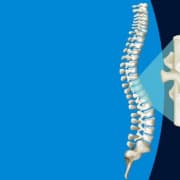Scalene Stretches That Target Your Scalene Muscles
Why Stretching Your Scalene Muscles Matters
If you’ve ever experienced neck stiffness or tension, your scalene muscles might be the culprit! These small but important muscles on the sides of your neck help with movement and even play a role in breathing. Let’s walk through some simple yet effective stretches to loosen up your scalenes, improve flexibility, and relieve discomfort.
From the simple neck side bend to other gentle stretches, you’ll learn how to safely stretch and strengthen your neck for better movement and overall well-being. Let’s get started and help your neck feel its best!
Key Takeaways
- Stretching your scalene muscles regularly can improve neck flexibility, reduce tension, and even support better breathing.
- The neck side bend is a simple yet effective way to release tightness in the sides of your neck.
- Seated and supine variations of scalene stretches offer different ways to target these muscles, whether sitting at a desk or lying down.
Consistency is key—practicing these stretches a few times a week can lead to noticeable improvements in mobility and comfort.
Understanding the Scalene Muscles
The scalene muscles, a group of three pairs of muscles located in the lateral aspect of the neck, play an essential role in facilitating neck movement and respiratory function.
These muscles include the anterior, middle, and posterior scalene, each contributing to the stabilization and mobility of the cervical spine. The scalene muscles assist in the elevation of the first two ribs during inhalation, aiding in deep breathing.
Additionally, they are involved in lateral flexion and rotation of the neck, allowing for a greater range of motion. Tightness or dysfunction in these muscles can lead to discomfort and restricted movement, highlighting their significance in both posture and overall neck health.
Understanding these muscles is key to relieving tension and improving mobility. The good news? There are simple, effective ways to stretch them! Let’s break down the best techniques to help you feel your best.
Stretching Technique #1: Neck Side Bend
Stretching techniques targeting the scalene muscles can considerably enhance neck mobility and alleviate discomfort. The Neck Side Bend is a simple yet effective stretch to release tension in the scalene muscles and improve neck flexibility.
Here’s how to do it:
- Sit or stand upright – Maintain good posture with your shoulders relaxed.
- Tilt your head to one side – Slowly bring your ear toward your shoulder without lifting the opposite shoulder.
- Hold for 15-30 seconds – Feel the gentle stretch along the side of your neck.
- Repeat on the other side – Switch sides to ensure balanced flexibility.
Stretching Technique #2: Seated Neck Stretch
Enhancing neck flexibility and alleviating tension can be achieved through the seated neck stretch. This effective technique involves sitting comfortably in a chair with feet flat on the ground.
The individual then tilts their head to one side, bringing the ear closer to the shoulder while keeping the opposite shoulder down. To deepen the stretch, a gentle hand can be placed on the head to pull the neck into a deeper stretch. Holding this position for 15-30 seconds allows for a gentle elongation of the scalene muscles.
Afterward, it is essential to repeat the stretch on the opposite side.
Stretching Technique #3: Supine Scalene Stretch
To effectively target the scalene muscles and promote relaxation, the supine scalene stretch offers a beneficial yet straightforward approach. This stretch can enhance flexibility and reduce tension in the neck and upper back.
Here are the steps to perform the Supine Scalene Stretch:
- Lie Flat: Position yourself on your back on a flat surface, ensuring comfort.
- Tilt your head to one side – Slowly bring your ear toward your shoulder without lifting the opposite shoulder.
- Hold for 15-30 seconds – Feel the gentle stretch along the side of your neck.
- Repeat on the other side – Switch sides to ensure balanced flexibility.
Incorporating stretching into a regular routine can promote overall neck health and alleviate discomfort associated with scalene muscle tightness. And one of the best times to perform these stretches is first thing in the morning after waking up.
Frequently Asked Questions
What Are the Common Symptoms of Scalene Muscle Tension?
Common symptoms of scalene muscle tension include neck pain, headaches, shoulder discomfort, and restricted range of motion. Patients may also experience tingling or numbness in the arms and hands, indicating nerve involvement due to muscle tightness.
How Often Should I Perform Scalene Stretches?
The frequency of performing scalene stretches varies, but generally, it is recommended to stretch these muscles several times a week. Consistency enhances flexibility and reduces tension, promoting overall neck and shoulder health.
Can Scalene Stretches Help With Headaches?
Research indicates that scalene stretches may alleviate tension in the neck and shoulders, potentially reducing headache frequency and intensity. By promoting relaxation and improved blood flow, these stretches can contribute positively to headache management strategies.
Are These Stretches Safe for Everyone?
These stretches may not be right for everyone, especially if you have serious neck pain, recent injuries, or other health concerns. It’s always a good idea to talk to a healthcare professional before starting new stretches to make sure they’re safe for you.
At Mind Body Spine, we’re dedicated to helping you move better and feel better. Incorporating scalene stretches into your routine is just one way to improve neck mobility and reduce tension. For more at-home exercise, be sure to check out our extensive video library.
Looking for more personalized support? We offer tailored exercise plans, chiropractic care, and holistic wellness solutions to keep you feeling your best. Contact us today to book an appointment and take the next step toward better health!










